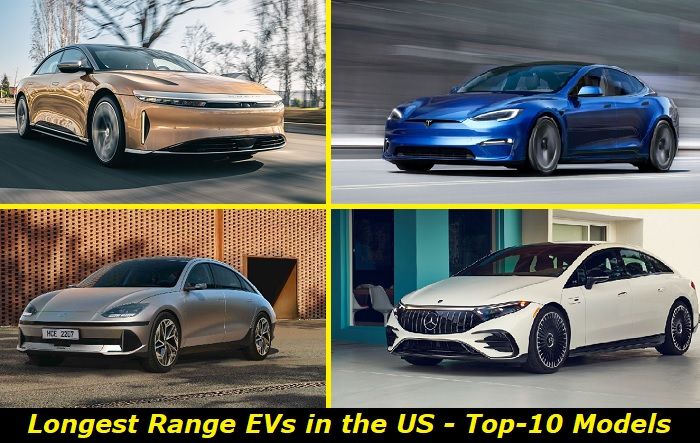Broncos have been an enormous part of America's pop culture since the infamous O.J Simpson 35mph car chase. Before that incident, the Broncos had not captured the public's imagination. However, the sales increased the following year by 7000 units.
Key features and my opinion about the engine
- Production years:2015-now
- Average lifespan of 2.7L V6 EcoBoost:190,000-240,000 miles
- Fuel supply type:direct injection (later combined direct + port injection)
- Power range:315-330 hp
- Fuel efficiency:average
- Engine block material:cast-iron
- Engine reliability score:medium
- The most common problems:valvetrain problems, issues with electronics, oil consumption, power loss.
Key features and my opinion about the engine
- Production years:2015-now
- Average lifespan of 2.3L EcoBoost:120,000-140,000 miles
- Fuel supply type:direct injection
- Power range:270-395 hp
- Fuel efficiency:average
- Engine block material:aluminum
- Engine reliability score:low
- The most common problems:fatal overheating issues, very unreliable fuel supply system, turbocharger failure.
.jpg)
EcoBoost Engine 2.3L Ford Bronco
If you do not plan on putting your Bronco through the wringer, it may be wise to save some money and go for the 2.3L engine. Ford designed the engine so it was adaptable to different consumers. Unlike the 2.7L engine, the 2.3L affords a variety of choices that ensure you get an engine that fits your consumption and environment just right.
The 2.3L Ford Bronco engine has four cylinders at the base trim. It can deliver 300 hp and a torque of 324 pound-feet. The output of the engine is excellent because it is turbocharged. Please don't underestimate the small appearance of the engine, as it has more horsepower than its biggest competitor Jeep Wrangler.
You can choose to have your 2.3L Ford Bronco engine with a 7-speed manual transmission or a 10-speed automatic transmission.
EcoBoost Engine 2.7L Ford Bronco
The Ford 2.7L engine is a V6 engine with a twin-turbo that activates at 330 hp and 414 pound-feet of torque. It shares a similar direct injection system with the 2.3L engine. Unlike the 2.3L engine, the 2.7L engine only offers a 10-speed automatic transmission. The lack of a manual transmission may be one of the engine's most significant drawbacks since some a class of auto enthusiasts want their Broncos' to be as 'authentic' as possible.
Ford ensured those who spent a little extra for the 2.7L did not go home feeling cheated. The 2.7L has various advantages over the 2.3L, most notably the twin-turbo rather than a single turbo. The engine block is different as it is a two-piece block made of compacted graphite iron. The bottom block has a ladder frame that ensures reinforcement around the cylinders.
Other notable features that the 2.7L engine boasts are a new EGR system, an auxiliary fueling port, and some changes to the design to reduce friction in the cylinders. The updated engine has a unique dual camshaft drive system, a new camshaft, and new turbochargers that have electronically activated wastegates.
Gasoline Direct Injection Fueling (GDI)
One of the most critical aspects of the 2.3L and 2.7L EcoBoost engines is the Gasoline direct injection. Direct injection, or GDI, is an age-old technology developed by Bosch in Germany around the 1950s. The technology was not popular in production vehicles in North America until about the mid-2000s.
When it comes to the direct injection system, they run at higher pressures than the port fueling technology. To facilitate the high pressure of about 2-3000 PSI, which is 50x more required for direct injection, they have increased pressure fuel pumps for the direct injection.
For GDI to function correctly, it injects automized fuel directly into the combustion chamber and not upstream. With this GDI system, you can ensure precise fuel injection timing and consequently reduce massive emissions while boosting performance and fuel economy.
The disadvantages of the GDI are that it increases the manufacturing cost and adds complexity to the systems. Generally, GDI systems are more expensive than their counterparts as they also come with an extra fuel pump. Another disadvantage is that high-pressure pumps have proven to be unreliable, and they are expensive to replace. Cars with GDI tend to face carbon buildup at the intake valves.
Reliability Ford 2.3L vs. 2.7L
Regarding reliability, the 2.3L and the 2.7L engines are highly consistent and reliable. The short period that they have been in the market has proven that they can be durable. Between the two engines, none has significant issues. Consumers have reported that both can be relied upon for long and faithful service. Several drivers have however reported catastrophic engine failure in their 2.7L engines, as explained below. There have not been any overwhelming complaints about the 2.3L engine.
Generally, both engines are durable, and you can drive up to 200,000+ miles before you start getting concerned. If you want your EcoBoost engine to last longer, you should adhere to your OEM maintenance protocol and proper maintenance.
When you modify your EcoBoost engine, you will have to have smaller maintenance intervals because of the added stress on your engine. When you properly and regularly maintain your EcoBoost engine, you will always be confident in your car's longevity and reliability.
The NHTSA Investigation Into the 2.7L Engine
In June 2022, the National Highway Traffic Safety Administration launched an investigation into the 2021 2.7L EcoBoost V6 engine-powered Ford Bronco. The investigation was based on several complaints filed by drivers who had suffered catastrophic engine failures. After receiving more than fifty individual complaints, the NHTSA launched an investigation.
The administration announced that the investigation would revolve around the 2.7L engine's malfunctioning drivetrain that has put drivers in severe danger. Auto industry experts have revealed that the probe will go beyond the valve train and inspect the valve keepers. These valve keepers, tasked with the job of locking the valve spring retainer to the valve, have been failing. The result has been the valve dropping into the combustion cylinder, causing the Bronco to become inoperable.
The Office of Defects Investigations report approximates that up to 25,000 Bronco owners may be affected by this issue. Rumors are rife that Ford may be compelled to recall the 2021 2.7L Bronco should the investigation results prove to be damning. The agency has called on people to stop speculating as the investigation merely seeks to investigate the implied defect's scope, frequency, and safety repercussions.
Most curious is why the 2.7L engine has not faced similar challenges in the rockstar of the Ford family, the F-150 pickup truck. The celebrated truck uses the same engine Ford put in the 2021 Bronco without complaints from owners and drivers. Consumers will have to wait for the NHTSA investigation to conclude.
In the meantime, the smart money will probably be better spent on the 2.3L engine with no known problems. Other problems previously associated with the 2.7L engine (and that you should look out for) are discussed below.
Issues That Are Associated with the EcoBoost Engine
Some of the significant problems with the EcoBoost engine include; carbon buildup, head gasket failure, and the underbody getting too hot. The head gasket failure and high underbody temperatures were common to about 23,000 models between 2015 and 2016. Ford has already corrected these two problems.
For the EcoBoost engines, carbon buildup is expected since its natural for the system. Most EcoBoost engines are unaffected by carbon buildup, which makes no difference. It is good to remember that when in severe cases, it can lead to rough idling, power loss, and even can cause misfiring. To deal with the issue of carbon buildup, you need to walnut blast the valves, but this is not a permanent solution.
The larger 2.7L engine faces issues such as: carbon buildup, a leaking oil pan, spark plugs, and ignition coils. Problems with the ignition coil and the spark plug result from the turbocharged aspect. Ignition components such as the ignition coil and the spark plug undergo increased stress and wear since turbo engines have higher cylinder pressures. This makes the EcoBoost go through them fast and makes the issues familiar.
The problems with the oil pan leaking and carbon buildup were rectified on the 2.7 during the 2018 updates. The oil pan got a new design that did away with the issue of sealing. They also added port injection to avoid carbon buildup around the intake valves.
When window shopping for a Ford Bronco, you are best served by avoiding the 2.7L model until the investigation has been concluded successfully. The 2.3L engine, while smaller, has many advantages that ensure it is not entirely disregarded. Most offroaders are surprised to discover what this tiny but powerful engine is capable of. Why not spend less when you are guaranteed to get more?
About the authors
The CarAraC research team is composed of seasoned auto mechanics and automotive industry professionals, including individuals with advanced degrees and certifications in their field. Our team members boast prestigious credentials, reflecting their extensive knowledge and skills. These qualifications include: IMI: Institute of the Motor Industry, ASE-Certified Master Automobile Technicians; Coventry University, Graduate of MA in Automotive Journalism; Politecnico di Torino, Italy, MS Automotive Engineering; Ss. Cyril and Methodius University in Skopje, Mechanical University in Skopje; TOC Automotive College; DHA Suffa University, Department of Mechanical Engineering






Add comment